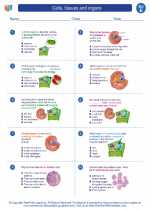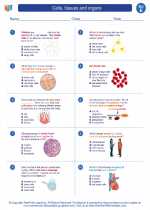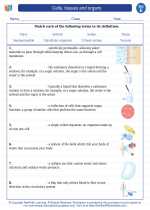Static Electricity
Static electricity is the build-up of electric charge on the surface of an object. It is called "static" because the charges remain in one area rather than moving or flowing to another area. This phenomenon occurs when certain materials are rubbed against each other, causing electrons to be transferred from one material to the other. The material that gains electrons becomes negatively charged, while the material that loses electrons becomes positively charged.
Causes of Static Electricity
Static electricity is caused by the movement of electrons from one object to another. When two different materials are rubbed together, the electrons move from one material to the other, resulting in one material becoming positively charged and the other becoming negatively charged.
Examples of Static Electricity
Some common examples of static electricity include:
- When you rub a balloon against your hair and the balloon sticks to the wall
- Getting a small shock when you touch a metal object after walking on a carpet
- Seeing a spark when you take off a sweater
Effects of Static Electricity
Static electricity can have several effects, including:
- Attraction and repulsion: Objects with opposite charges attract each other, while objects with the same charge repel each other.
- Electric shocks: When a charged object comes into contact with a conductor (such as a person), the excess charge can be transferred in a sudden flow of current, resulting in a small electric shock.
- Spark discharges: The rapid movement of charges can create sparks, which can be visible in low-light conditions.
Preventing and Discharging Static Electricity
To prevent or discharge static electricity, you can take the following measures:
- Using antistatic products: These products help to neutralize or dissipate static charges on materials.
- Grounding objects: Connecting conductive materials to the ground can help to discharge static electricity.
- Increasing humidity: Dry air tends to promote the accumulation of static charges, so increasing the humidity in an area can help to reduce static electricity.
Study Guide
Here are some key points to remember about static electricity:
- What is static electricity?
- What causes static electricity?
- Give examples of static electricity in everyday life.
- What are the effects of static electricity?
- How can static electricity be prevented or discharged?
◂Science Worksheets and Study Guides Fifth Grade. Cells, tissues and organs

 Worksheet/Answer key
Worksheet/Answer key
 Worksheet/Answer key
Worksheet/Answer key
 Worksheet/Answer key
Worksheet/Answer key
 Vocabulary/Answer key
Vocabulary/Answer key
 Vocabulary/Answer key
Vocabulary/Answer key
 Vocabulary/Answer key
Vocabulary/Answer key
 Vocabulary/Answer key
Vocabulary/Answer key
 Vocabulary/Answer key
Vocabulary/Answer key
 Vocabulary/Answer key
Vocabulary/Answer key
